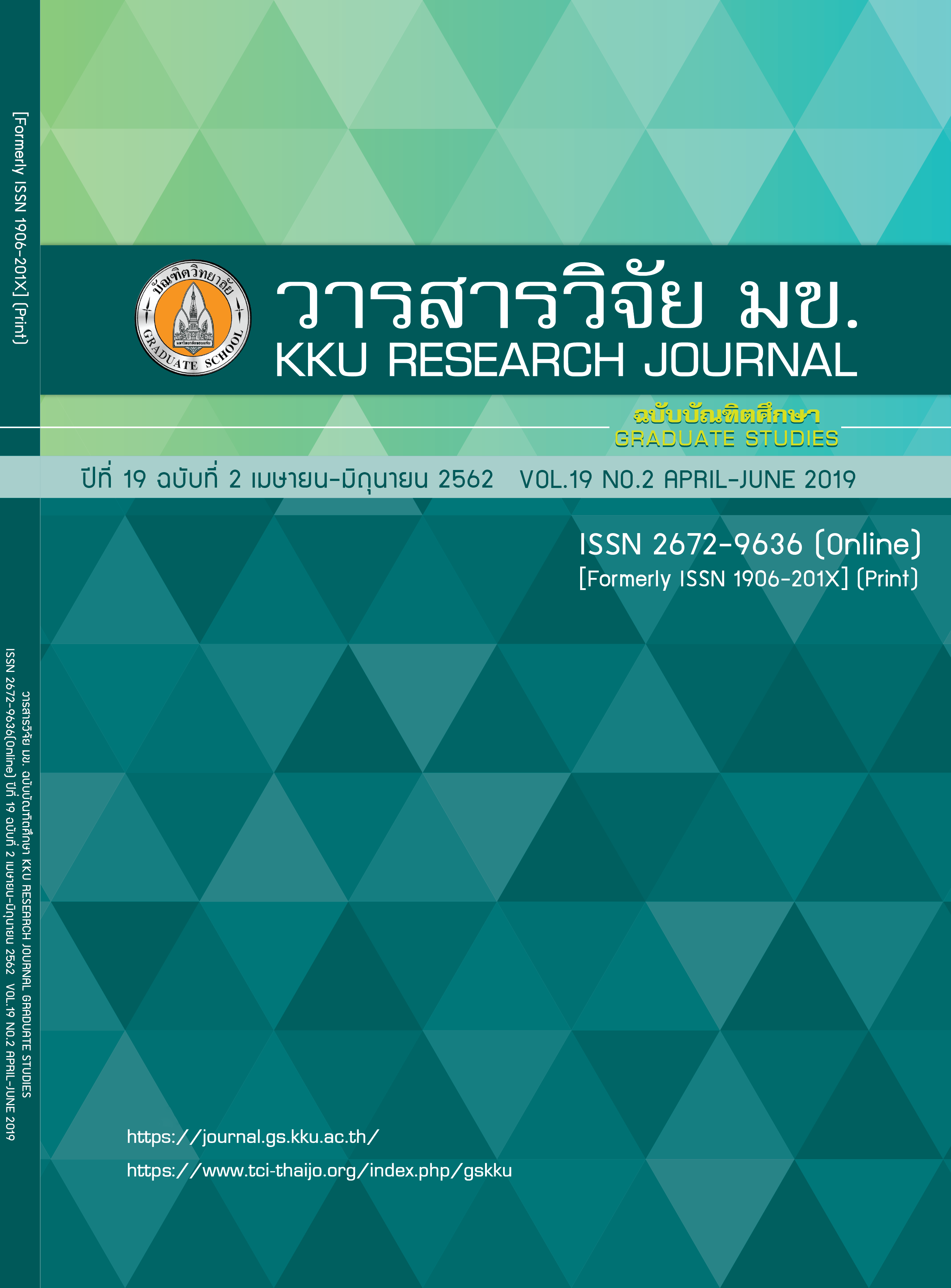Use of Ordinary Portland Cement and Nano-Silica in Fly Ash Based Geopolymer Concrete
Keywords:
Geopolymer concrete, Ordinary Portland cement, Nano silica, Fly ashAbstract
This study investigated the mechanical and durability properties of fly ash geopolymer concrete containing ordinary Portland cement (OPC) and nano-SiO2 (nS). OPC was used as a partial replacement of high calcium fly ash (HCF) in geopolymer concrete at the rate of 5, 10 and 15% by weight of binder. While, nS was added at the rate of 1, 2 and 3% by weight of HCF. The slump flow, strength, water absorption, chloride penetration and sulfuric acid resistant of geopolymer concrete were tested. The results revealed that the use of OPC decreased the workability of geopolymer concrete and the use of nS resulted in little change in the workability.The use of both OPC and nS gave higher strength than that of geopolymer concrete with only fly ash. In addition, it was found that the use of OPC resulted in the improvement of chloride penetration of geopolymer concrete, while the resistant to sulfuric acid tended to decrease. The use of nS led to reductions in resistances to chloride penetration and acid attack.
References
2. Chindaprasirt P, De Silva P, Sagoe-Crentsil K, Hanjitsuwan S. Effect of SiO2 and Al2O3 on the setting and hardening of high calcium fly ash-based geopolymer systems. Journal of materials science. 2012; 47: 4876-4883.
3. Gao K, Lin K, Wang D, Hwang C, Shiu H, Chang Y, Cheng T. Effects SiO2/Na2O molar ratio on mechanical properties and the microstructure of nano-SiO2 metakaolin-based geopolymers. Construction and building materials. 2014; 53: 503-510.
4. Nath P, Sarker PK. Effect of GGBFS on setting, workability and early strength properties of fly ash geopolymer concrete cured in ambient condition. Construction and building materials. 2014; 66: 163-171.
5. Somna R, Jaturapitakkul C, Amde AM. Effect of ground fly ash and ground bagasse ash on durability of recycled aggregate concrete. Cement and concrete composites. 2012; 34: 848-854.
6. Rerkpiboon A, Tangchirapat W, Jaturapitakkuk C. Strength, chloride resistance, and expansion of concretes containing ground bagasse ash. Construction and building materials. 2015; 101: 983-989.
7. American Society for Testing and Materials (ASTM) C267-01, Standard test method for chemical resistance of mortars, grouts, and monolithic surfacings and polymer concretes. 2012.
8. American Society for Testing and Materials (ASTM) C1611/1611M-14, Standard test method for slump flow of self-consolidating concrete. 2014.
9. American Society for Testing and Materials (ASTM) C642-13, Standard test method for density, absorption, and voids in hardened concrete. 2013.
10. American Society for Testing and Materials (ASTM) C39/C39M-16b, Standard test method for compressive strength of cylindrical concrete specimens. 2016.
11. American Society for Testing and Materials (ASTM) C496/C496M-11, Standard test method for splitting tensile strength of cylindrical concrete specimens. 2016.
12. American Society for Testing and Materials (ASTM) C78/78M-16, Standard test method for flexural strength of concrete (using sample beam with third-point loading). 2016.
13. American Society for Testing and Materials (ASTM) C1585-13, Standard test method for measurement of rate of absorption of water by hydraulic cement concrete. 2013.
14. Nath P, Sarker PK. Use of OPC to improve setting and early strength properties of low calcium fly ash geopolymer concrete cured at room temperature. Cement and concrete composites. 2015; 55: 205-14.
15. Bernal J, Reyes E, Massana J, Leon N, Sanchez E. Fresh and mechanical behavior of a self-compacting concrete with additions of nano-silica, silica fume and ternary mixtures. Construction and building materials. 2018; 160: 196-210.
16. Posi P, Thongjapo P, Thamultree N, Boontee P, Kasemsiri P, Chindaprasirt P. Pressed lightweight fly ash-OPC geopolymer concrete containing recycled lightweight concrete aggregate. Construction and building materials. 2016; 127: 450-456.
17. Provis JL, Myers RJ, White CE, Rose V, Deventer JSJ. X-ray microtomography shows pore structure and tortuosity in alkali-activated binders. Cement and concrete research. 2012; 42: 855-864.
18. He P, Wang M, Fu S, Jia D, Yan S, Yuan j, Xu J, Wang P, Zhou Y. Effects of Si/Al ratio on the structure and properties of metakaolin based geopolymer. Ceramics international. 2016; 42: 14416-14422.
19. Gao K, Lin K, Wang D, Hwang C, Tuan B, Shiu H, Cheng T. Effect of nano-SiO2 on the alkali-activated chracteristics of metakaolin-based geopolymers. Construction and building materials. 2013; 48: 441-447.
20. Du H, Du S, Liu X. Durability performances of concrete with nano-silica. Construction and building materials. 2014; 73: 705-712.
21. Tennakoon C, Shayan A, Sanjayan JG, Xu A. Chloride ingress and steel corrosion in geopolymer concrete based on long term tests. Materials & design. 2017; 116: 287-299.
22. Shaikh F, Supit SWM. Chloride induced corrosion durability of high volume fly ash concretes containing nano particles. Construction and building materials. 2015; 99: 208-225.
23. Zibara H, Hooton RD, Thomas MDA, Stanish K. Influence of the C/S and C/A ratios of hydration products on the chloride ion binding capacity of lime-SF and lime-MK mixtures. Cement and concrete research. 2008; 38: 422-426.
24. Lee NK, Lee HK. Influence of the slag content on the chloride and sulfuric acid resistances of alkali-activated fly ash/slag paste. Cement and concrete composites. 2016; 72: 168-179.
25. Chindaprasirt P, Rattanasak U, Taebuanhuad S. Resistance to acid and sulfate solutions of microwave-assisted high calcium fly ash geopolymer. Materials and structures. 2013; 46: 375-381.
26. Monteny J, De Belie B, Taerwe L. Resistance of difference types of concrete mixtures to sulfuric acid. Materials and structures. 2013; 47: 242-249.



